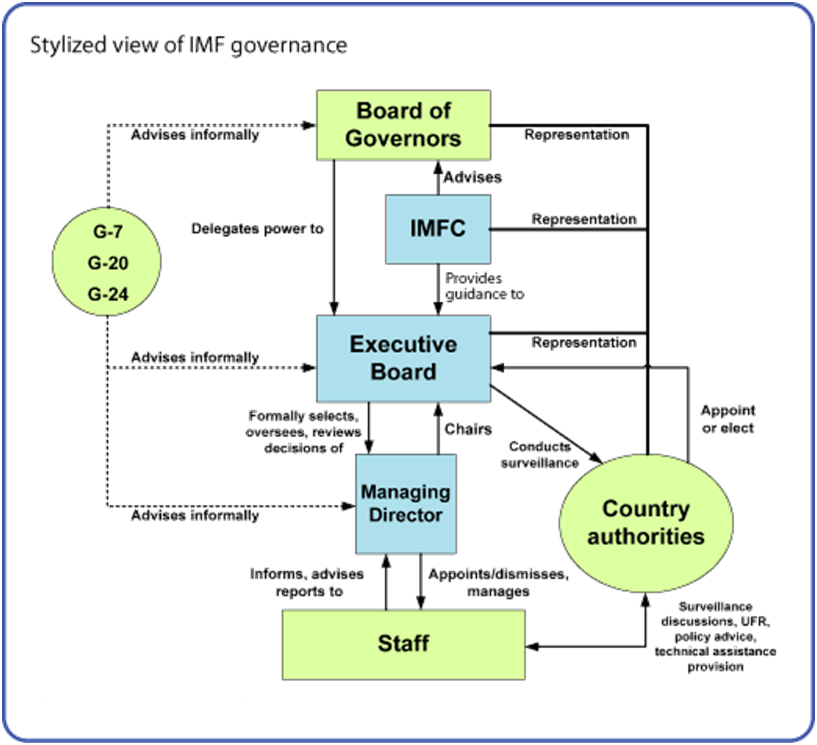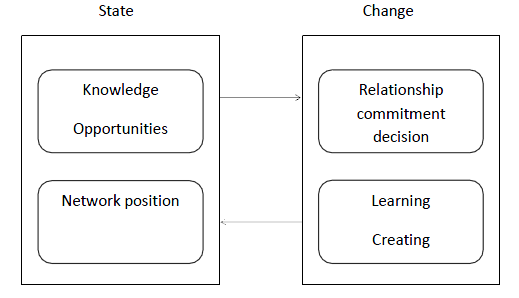Posts Tagged ‘Globilisation’

Abstract The International Monetary Fund (IMF) as one of the leading global financial organisations that deals with the issues of securing financial stability, facilitation of international trade, promoting economic growth in a sustainable manner, and poverty reduction in a global scale. There are mixed opinions about the role and performance of organisation in dealing with these issues. Some people perceive IMF to be an important organisation making valuable contribution to macroeconomic stability, whereas others blame the organisation for financial problems within specific countries and areas. Nevertheless, nowadays IMF has to deal with a set of complex challenges in local and global scales. This paper attempts to critically evaluate a set of issues directly related to IMF performance. The paper has identified major challenges faced by IMF to include its governance structure, increasing level of politicisation, leadership challenges, performance evaluation difficulties, and dealing with social instability. займы срочные в день обращения Moreover, necessary changes have been proposed for IMF that should assist in dealing with the challenges the organisation is facing. These changes include reforming IMF governance, gaining focus on role and objectives, developing performance accountability frameworks, improving lending policy, and increasing the level of comprehensiveness in country analysis. 1. Introduction The International Monetary Fund (IMF) is “an organization of 188 countries, working to foster global monetary cooperation, secure financial stability, facilitate international trade, promote high employment and sustainable economic growth, and reduce poverty around the world” (About IMF, 2016). IMF was set up during Bretton Woods Agreements in 1944 with only 44 countries and it is governed by a Managing Director and Chairman of the Executive Board, currently Christine Lagarde, who is assisted by the First Deputy and three other Deputy Managing Directors. The Articles of Agreement of IMF state that the Managing Director “shall be chief of the operating…

This article contains application of Uppsala model of internationalisation on the case study of Shanghai Vision Technology Co., Ltd, a medium sized manufacturer of 3D printers and other innovative products based in Shanghai, China. Uppsala model of internationalisation also known as a learning theory of internationalisation identifies four individual steps of internationalisation. According to Uppsala model engaging in exporting in occasional manner should constitute the first step in internationalisation. Initial experience of operating in the new market is going to be gained by Shanghai Vision Technology during this step. Exporting through sales agents in new markets marks the second step in internationalisation. Presence of the company in the new market is going to be increased during this step with positive implications on the levels of knowledge about unique aspects of the market. Establishment of Shanghai Vision Technology sales subsidiaries in foreign market is the third step of internationalisation according to the model. During this step the company is in the position of obtaining experience and knowledge about the market in a direct manner. Starting the production in the foreign market through wholly owned subsidiaries is the last step of internationalisation within the framework of Uppsala model of internationalisation. This step is associated with benefiting from ownership, location and internationalisation advantages by Shanghai Vision Technology to a full extent which is explained with the application of Dunning Electric Paradigm further below. Importantly, Uppsala model acknowledges the lack of knowledge about specifications of new markets to be an important barrier in terms of becoming successful in respective market. In other words, unlike many other models of internationalisation, Uppsala model rightly specifies knowledge about the market as a critical success factors. Revised version of Uppsala model contains the application of basic networking prospect in a way that mutual interactions and influence of state…

The last several decades have witnessed gradual and dramatic changes in the nature of work due to a number of reasons that include, but not limited to intensifying level of competition in marketplace, developments in information technology and other technological developments, increasing forces of globalisation and certain aspects of demographic changes. Increasing popularity of alternative working patterns such as part-time working, flexitime employment, telecommuting, job-sharing and compressed workweek marks the most important change in the nature of work in the 21st century. It has been estimated that “currently around 29 per cent of UK employees work part-time or in some other form of flexible working pattern” (Holbeche, 2013, p.58). Part-time working is not a new practice in modern times; however, the popularity of part-time employment has increased during the last couple of decades due to attempts to improve the levels of work-life balance and a set of other reasons discussed below in a greater details. Flexitime employment as a different version of alternative working patterns “specifies core hours when people must be on the job, with flexible starting and finishing times as long as required total hours are worked” (Swanepoel et al, 2008., p. 217 as taken from Bartol et al., 2008, p.413) Telecommuting, on the other hand, can be explained as “to work at home using a computer connected to the network of one’s employer” (Free Dictionary, online, 2014) and it offers the advantages of working from the comfort of home. Job sharing involves roles and responsibilities of a single position being assumed by two or more employees so that each employee has extra free time to devote to pushing hobbies, spending time with the family and other activities of their choice. Compressed workweek working pattern permits employees to complete required hours for the week in less than traditional…

Rentier state theory is “a political economy theory that seeks to explain state-society relations in states that generate a large proportion of their income from rents, or externally-derived, unproductively-earned payments” (Gray, 2011, p.1). In simple terms, rentier states derive substantial proportions of their revenues from renting their sources of natural resources to external parties. Rentier states are less motivated to offer concessions to individuals because it is less dependant of taxation to execute its duties, receiving substantial amounts of funds from abroad. Development of rentierism and rentier state theory into academic and practical levels can be divided into the following three phases: classical rentier state theory, the second phase of rientierism and late rientierism. Classical Rentier Theory The first phase of rentierism encompasses the period from the beginning of 1980’s and to the early 1990’s. This period is marked with immediate aftermath of Iranian revolution and Iran-Iraq war of 1980-1988. According to Elbadawi and Maksidi (2010), these both events have played significant role on fluctuations of world oil prices, with implications on global scale. Jenkins et al. (2011) argue that this period of time is associated with a harsh, dictatorial rule of heads of rentier states. Moreover, Jenkins et al. (2011) note about misallocation of wealth, high levels of corruption and overall inefficiencies in rentier Gulf states during the phase. The Second Phase of Rentierism The validity of governments of rentier states being challenged, both, internally and externally is one of the main tendencies marking the second phase of rentierism. Specific factor contributing to these tendencies has been named as phenomenal economic developments in Dubai that served as a point for comparison by people from other oil rich countries in the region. Moreover, during the second phase of rentierism economic scholars acknowledged that the relationship between the levels…
